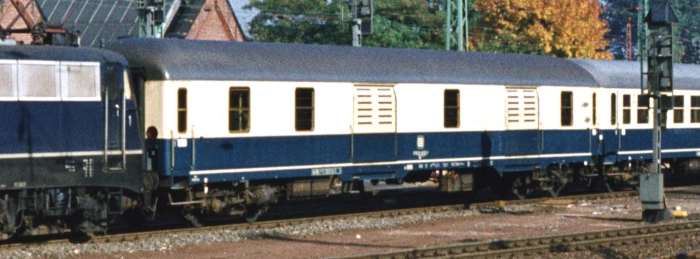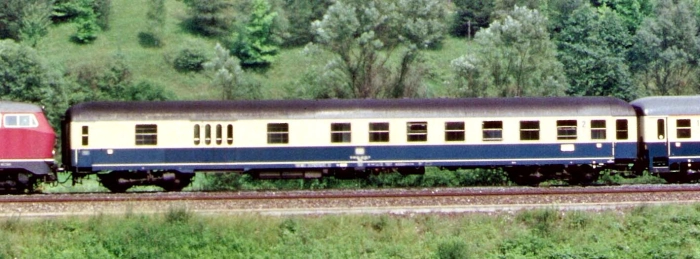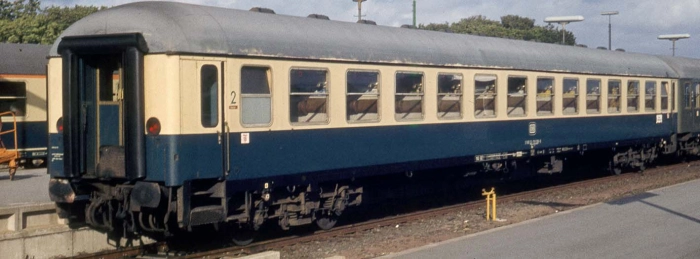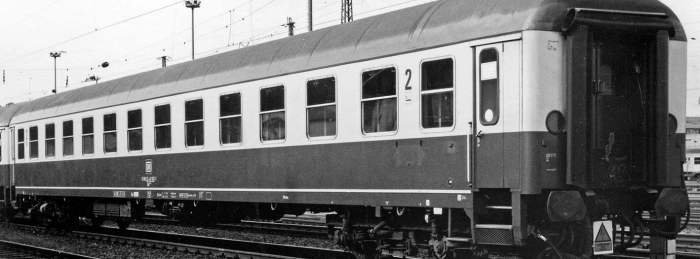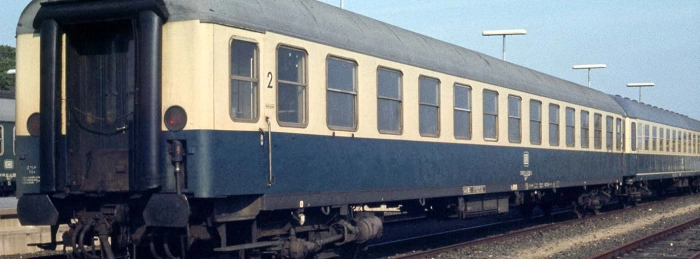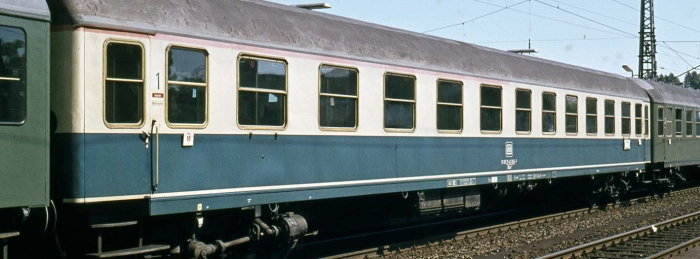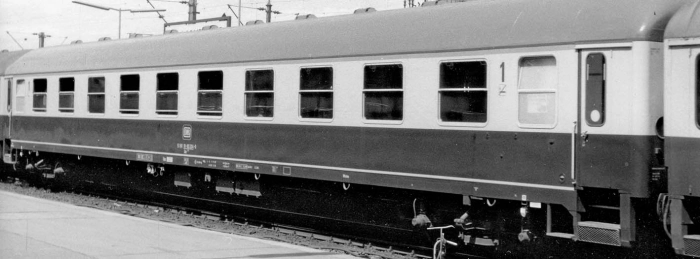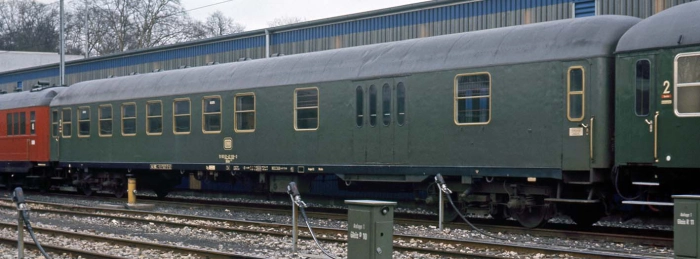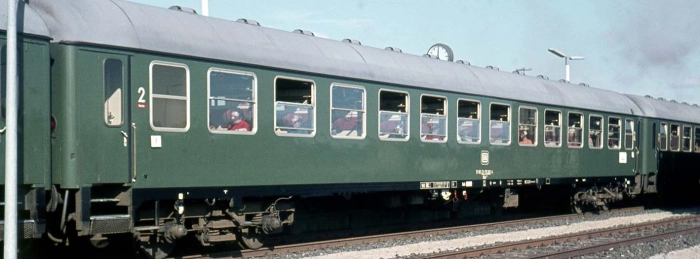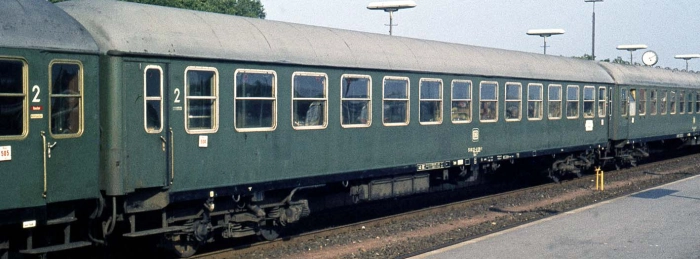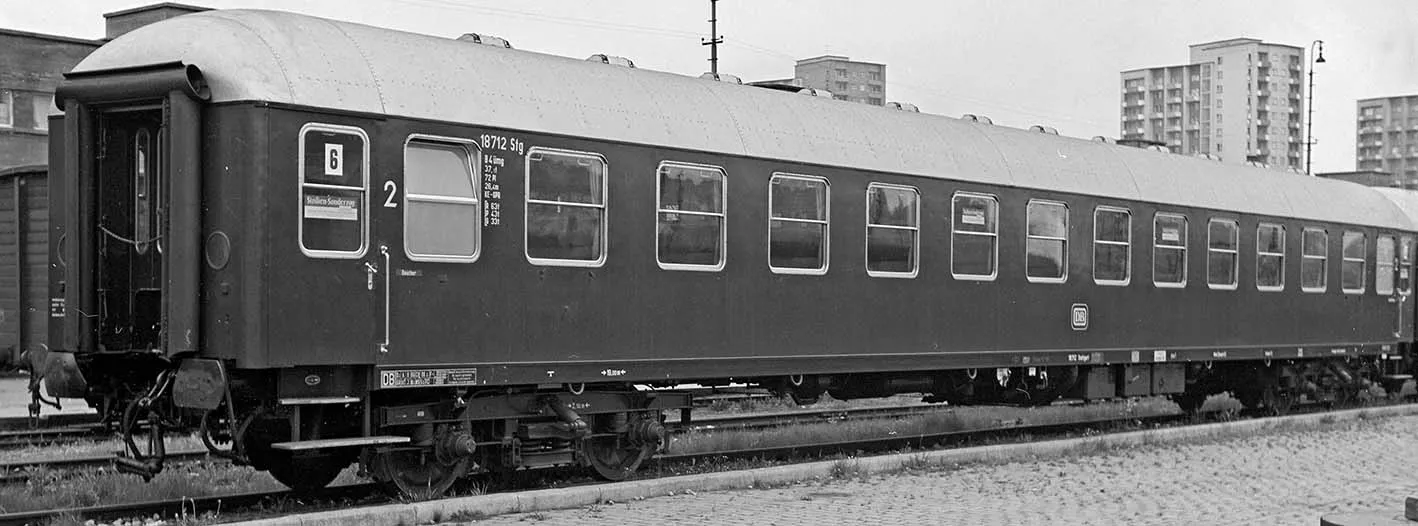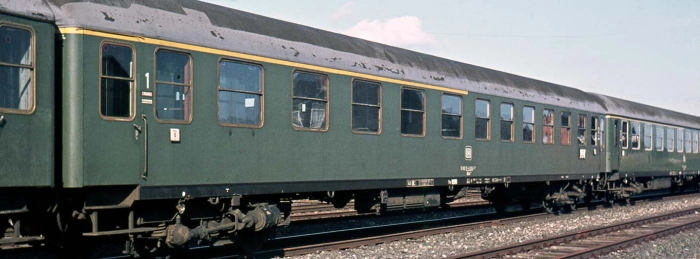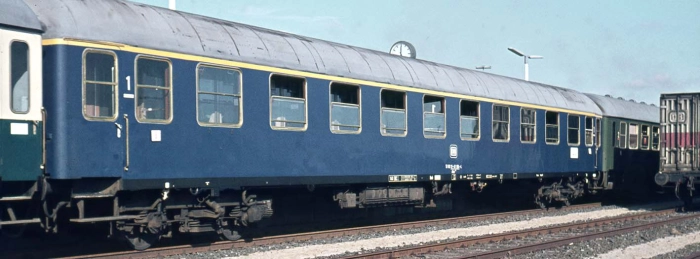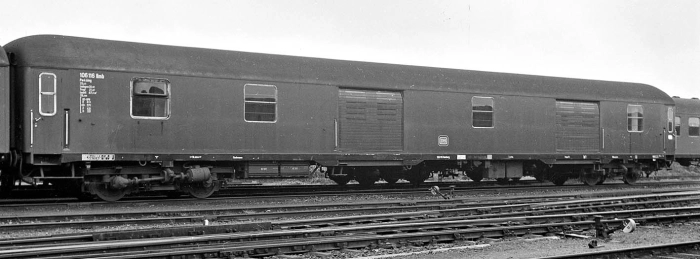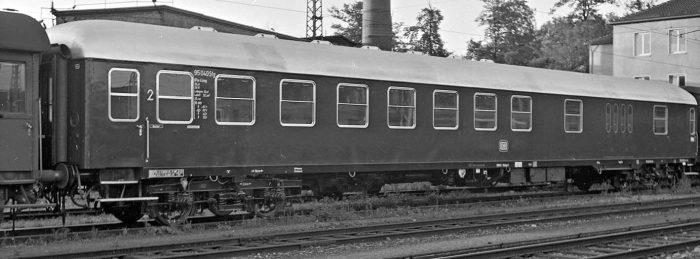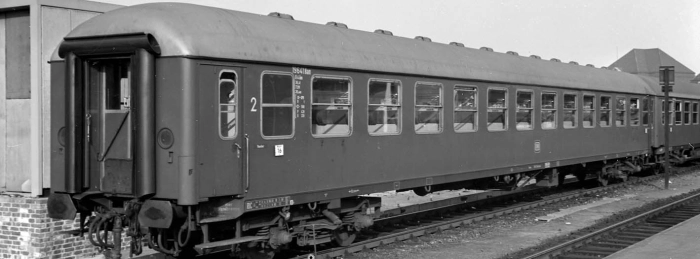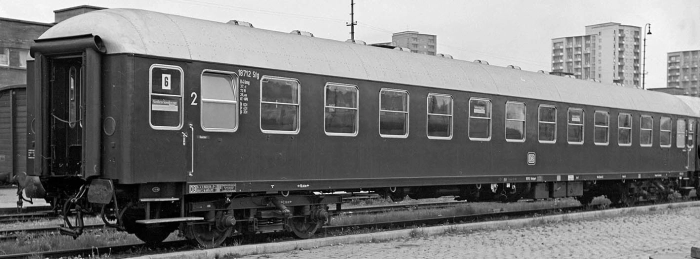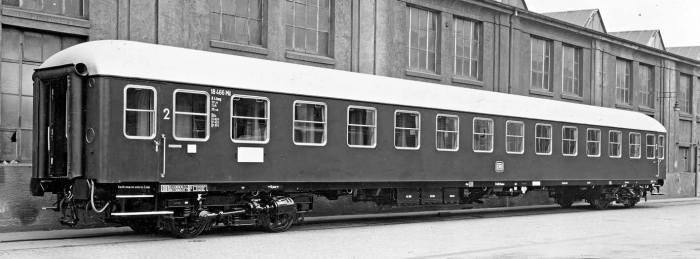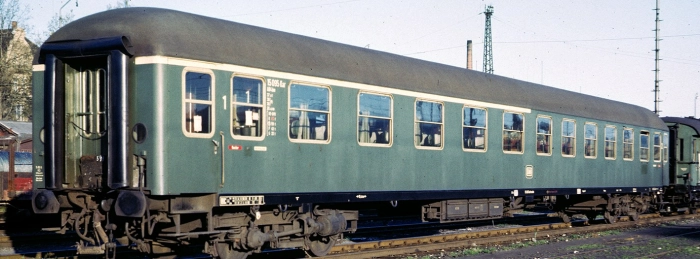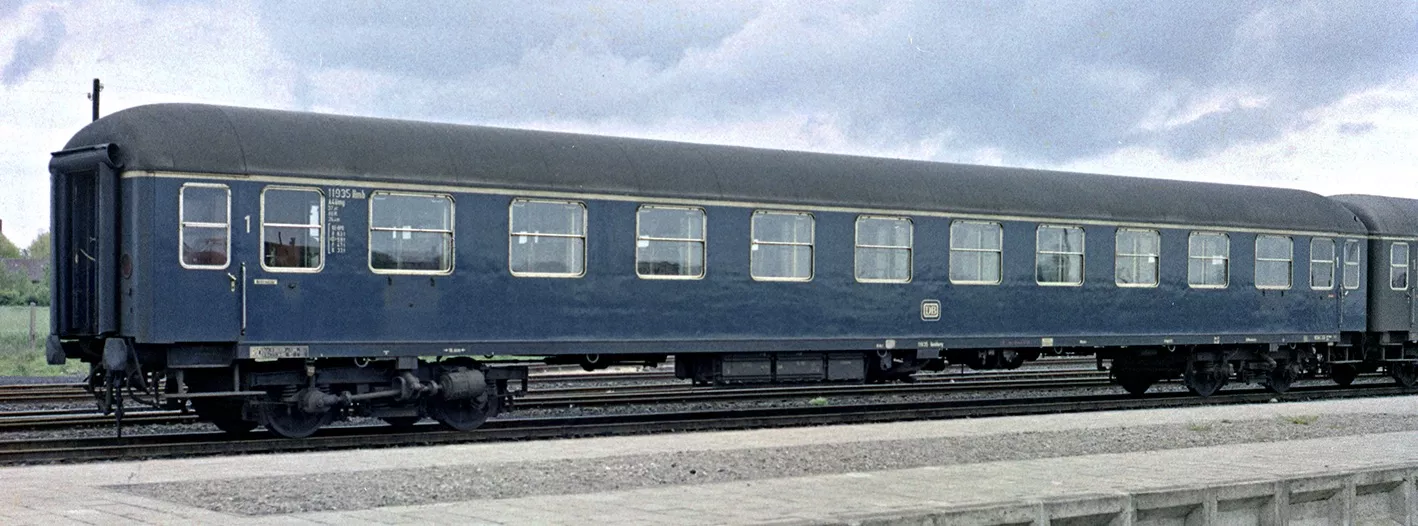
Luggage Car Düms902 DB
Road no.: 51 80 95-40 015-7
Model details
- True-to-scale reproduction of the windows
- Wheel sets of type 094/096 with corrugated wheeldiscs on both sides
- True-to epoch interior fittings
- Interior lighting prepared or built-in
- Elastic rubber bulge
- NEM-standard short coupling
- Alternator on bogie separately mounted
- Extra mounted steps and handrails
- Version with welded roofs
- Compatible with the electrical coupling from BRAWA
Info about the original
Around 1952, the DB central office in Minden developed a type programme for long-distance coaches with a length of 26.4 m (Group 53). A range of coaches was developed on the basis of a modular system under the direction of Dr Adolf Mielich, who repurposed his designs from the Reichsbahn era and added many modern elements, including closed rubber-bead transitions and 1,000 or 1,200 mm-wide sliding windows. The new coaches differed from the pre-war types in their even number of compartments and symmetrical coach halves, which made it possible to combine identical or different coach classes as well as dining and luggage compartments. Following the construction of nine test coaches in 1952, mass production began in 1955. With only three seats per bench instead of the usual four, the B4ümg-54 passenger carriages (1,225 units) offered second-class passengers a new level of comfort. As a result, this “passenger carriage for the people” was very well received by the general public. The first-class A4ümg-54 wagon type (199 units) exemplified the increased focus on comfort during this period. These wagons left the works painted in an elegant dark blue livery and were primarily incorporated into the DB’s F trains. The last types to be developed for Wagon Group 53 were the mixed-class AB4ümg-55 (357 units) and, from the end of the 1950s, the semi-luggage carriages of the type BPw4üm-58/59 (138 units). Thanks to numerous groundbreaking innovations, these wagons – and the later conversions derived from them – would remain an integral part of DB’s passenger train fleet for decades to come. It is therefore hardly surprising that the last of these wagons were only retired in the early 1990s, with some examples then commencing a “second life” in museum traffic.


